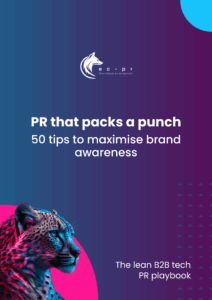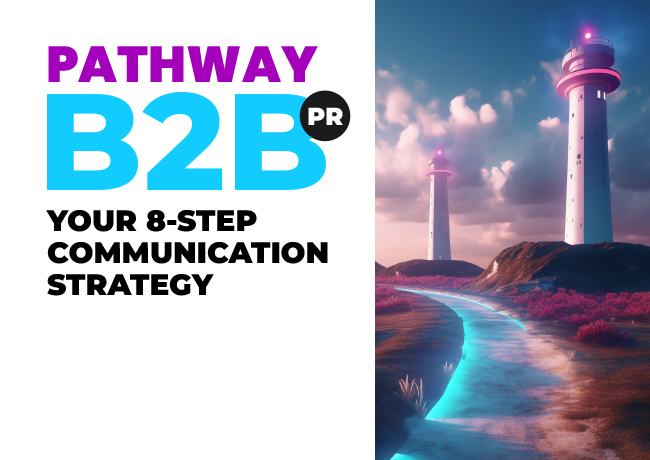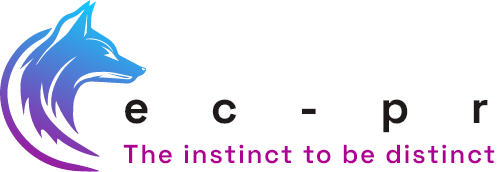
Why brand awareness is the bedrock of a resilient lead pipeline
In the past week, I’ve had three separate conversations with business leaders, each with the same pressing request: “We need more leads.”
It’s a familiar refrain. But when I asked a simple follow-up question – “What’s your value proposition?” or “What makes your brand stand out?” – each conversation took a turn. The energy in the room changed. Suddenly, I wasn’t the expert asked to solve a problem – I was the awkward guest at the party, asking something far too personal.
The truth is, when organisations experience a lead shortfall, it usually boils down to one of two brand awareness problems:
1 Your prospects don’t know you exist. If they’ve never encountered your brand, they simply can’t consider you when a need arises. No matter how good your product or service is, if you’re invisible, you’re irrelevant.
1 Your prospects don’t remember you. They may have seen your name on LinkedIn, via a cold sales email, or mentioned in passing. But without a compelling, memorable reason to recall your brand, you’ll be forgotten long before their actual need surfaces.
So, when I hear “We just need leads” delivered with increasing urgency, I gently pivot to the more revealing question: “Why do you think you’re not getting enough?”
Because a consistent, high-quality lead flow doesn’t start with a scattergun sales campaign. It starts with being known, being trusted and being front-of-mind. That means building brand awareness strategically, consistently and in tandem with lead generation activity.
Brand awareness isn’t a ‘nice-to-have’. It’s the engine room.
If lead generation is the harvest, brand awareness is the orchard. You can’t pick apples if you haven’t planted and nurtured the trees. And let’s face it, no one builds a business on apple scrumping.
The most successful tech scale-ups know this. They invest in building visibility, value and understanding so that when their prospects are ready to buy, they don’t have to search – they already know who to trust.
Why you need brand awareness for consistent lead generation
- The modern buyer’s journey demands brand recognition
- The psychological power of familiarity
- Brand awareness creates a compound interest effect
- Metrics that matter: measuring brand awareness impact
- From awareness to action: bridging the gap
- Building brand awareness within resource constraints
- When business leaders push back
- Brand awareness is the ultimate competitive moat
- The bottom line: awareness first, leads follow
The modern buyer’s journey demands brand recognition
Today’s B2B buyers complete nearly 70% of their decision-making process before ever speaking to a sales representative. They research independently, consult peer reviews and form opinions based on the digital footprint your brand leaves across the web.
In this self-directed environment, being recognisable isn’t just advantageous – it’s essential. When potential customers encounter your content, social presence or name in industry conversations, you want them to be mentally filing you away for future reference.
Without brand awareness, you’re relegated to being discovered only through active search – and that’s assuming your SEO strategy outperforms competitors who’ve already established trust and recognition.
The psychological power of familiarity
The ‘mere exposure effect’ is a psychological phenomenon where people develop a preference for things simply because they’re familiar with them. This isn’t just marketing theory – it’s hardwired human behaviour.
When prospects encounter your brand repeatedly in positive, value-adding contexts, you build what psychologists call “cognitive ease.” Your company becomes easier to think about, easier to remember and ultimately, easier to choose.
This is why the most sophisticated demand-generation strategies don’t just focus on immediate conversions. They create multiple touchpoints that build familiarity and positive associations over time.
Brand awareness creates a compound interest effect
Much like financial investments, brand awareness compounds over time. Each impression builds upon previous ones, creating a cumulative effect that grows stronger with consistency.
Companies that understand this principle allocate budget to brand-building activities even when they can’t directly attribute every dollar to an immediate lead. They recognise that today’s awareness campaigns become tomorrow’s lead generation foundation.
This approach requires patience – something in short supply when quarterly targets loom. However, organisations that maintain discipline during market fluctuations emerge with pipeline resilience their competitors lack.
Metrics that matter: measuring brand awareness impact
Many executives struggle with brand awareness because it seems less tangible than lead generation metrics. But sophisticated organisations track indicators that reveal brand health:
- Share of voice in industry conversations.
- Direct traffic growth to your website.
- Brand search volume trends.
- Social engagement rates on non-promotional content.
- Time spent with your thought leadership materials.
While not as immediately gratifying as lead counts, these metrics often more accurately predict future pipeline health than tactical campaign results.
From awareness to action: bridging the gap
Of course, awareness alone doesn’t fill the pipeline. The bridge between being known and generating leads is purposeful, strategic content that:
- Establishes your expertise in solving specific problems.
- Articulates your unique perspective on industry challenges.
- Demonstrates your methodology without giving everything away.
- Showcases success patterns with existing customers.
- Invites progressive engagement that naturally leads to sales conversations.
This content ecosystem creates natural pathways from initial awareness to active consideration—allowing prospects to self-qualify and enter your pipeline when they’re genuinely ready.
Building brand awareness within resource constraints
Not every company has the luxury of massive marketing budgets. However, focused brand awareness efforts can be surprisingly cost-effective when you:
- Target narrow audience segments with precision.
- Maintain consistency across fewer channels rather than diluting across many.
- Partner with adjacent, non-competitive brands to expand reach.
- Leverage your team’s existing expertise through thought leadership.
- Create “tentpole” content that can be repurposed across multiple formats.
The key is consistency – building recognisable patterns in your communication rather than sporadic, disconnected campaigns.
When business leaders push back
When executives resist investing in brand awareness, it often stems from past experiences with poorly executed branding initiatives that felt disconnected from business outcomes.
The solution isn’t to abandon brand building but to connect it directly to pipeline development through:
- Setting clearer metrics that show progression toward pipeline impact.
- Creating shorter feedback loops between awareness activities and lead signals.
- Developing more precise attribution models that capture multi-touch influence.
- Establishing a balanced portfolio of short and long-term marketing investments.
Brand awareness is the ultimate competitive moat
In an era where products and services are increasingly commoditised and competitive advantages are quickly replicated; brand awareness creates the ultimate defensible position.
When prospects know you, trust you and instinctively consider you when needs arise, you’ve built something competitors can’t easily copy – regardless of how much they spend on paid acquisition or sales outreach.
The bottom line: awareness first, leads follow
The next time you hear that urgent plea for “more leads,” remember that sustainable pipeline health rarely comes from intensifying tactical lead generation in isolation.
Instead, examine your brand awareness foundation. Are you consistently visible to your target audience? Do they understand your distinctive value? Can they easily recall what makes you different when needs arise?
Brand awareness isn’t just ‘often’ the answer. It’s almost always the foundation upon which reliable lead generation is built.
Cut the fluff! Tech PR that drives serious results

 Download our free guide:
Download our free guide:
PR that packs a punch: 50 tips to maximise brand awareness
Get actionable insights that focus your marketing budget on a public relations approach with proven results!

Your 8-Step Communication Strategy Guide
A comprehensive guide to delivering your business goals using intelligent and relevant messaging.
Subscribe to our updates
Stay up to date with the latest insights, case studies and PR guides.

